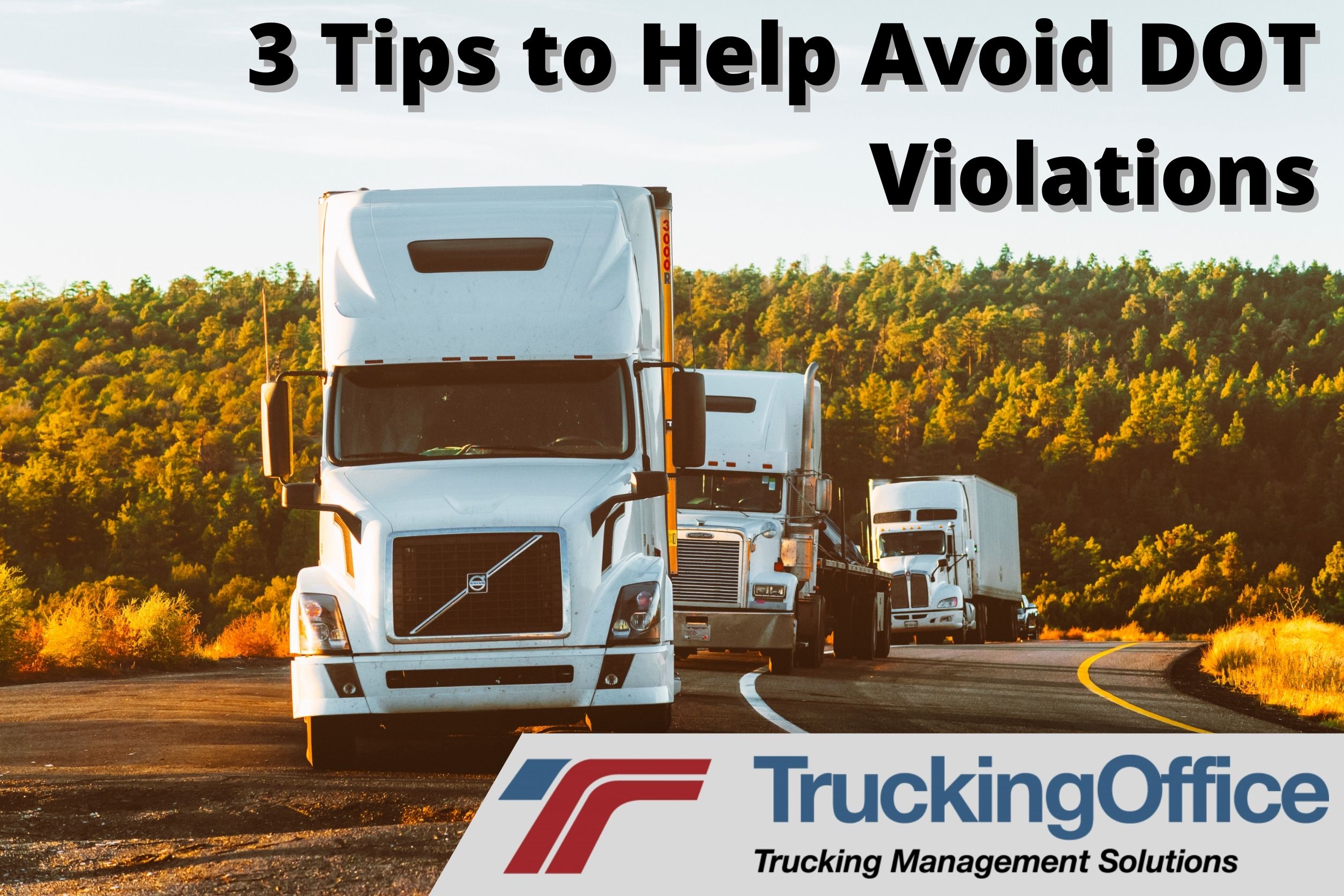Before you can effectively avoid DOT violations, you need to know what constitutes a violation and why DOT standards are so rigid. The great news is that when you put forth the effort to ensure compliance with their regulations, you become a safer driver. After all, that’s the foremost reason for the audits. With that in mind, here are three things you can do to stay in DOT’s good graces.
Tip #1: Know the Types of Violations
First, it’s important to know that some DOT violations can result in a driver or his vehicle being under an OOS (out of service) category. If the vehicle is in violation, you have the option of reparing it on the spot or towed it somewhere for service. If you, the driver, are under an OOS category, you would need to have another driver take over your truck. The best recourse is to avoid these predicaments altogether.
The most common USDOT violations can include the following:
- Common driver violations:
- No seatbelt
- Expired or invalid license
- Logging violations
- Exceeding HOS laws
- No medical card
- Common vehicle violations:
- No current inspection
- Improperly loaded cargo
- Defective or inoperable lights or reflectors
- Poor tire tread depth
- Leaking fluids such as oil, fuel, or transmission fluid
Your CSA scores (Compliance, Safety, Accountability) help the DOT determine whether an inspection is necessary. The CVSA conducts yearly inspections that allow the DOT officers and state troopers to stop and examine vehicles and drivers, so it’s wise to prepare ahead of time.
Tip #2: Get Prepared and Stay Prepared
Typically, it takes only about an hour for a DOT inspection if the vehicle has been properly maintained. Some of the things you can do to ensure that you avoid violations include the following:
- Be sure you understand all inspection procedures
- Perform inspections yourself pre-trip, en route, and post-trip to check for issues
- Maintain regular preventive maintenance practices at all times
- Keep the vehicle and equipment clean
- Display the company name and USDOT number where they are easily visible
- Check to ensure shipments are secured properly
Remember, these guidelines are in place to help make America’s highways safer for everyone, including CMV drivers like you.
Tip #3: What to Expect During the Roadside Check
You probably don’t want to hear this, but a DOT officer or state trooper can pull you over anywhere. Remember, your demeanor will be the first thing noted by the individual, so be polite and professional throughout the process. In this way, you establish the level of inspection to which you’ll be subjected.
Levels of inspections:
- North American Standard Inspection: an intensive process that checks everything.
- Walk-around Driver/Vehicle Inspection: the officer probably checks everything except underneath the vehicle.
- Driver-Only Inspection: focuses on the driver and his credentials.
- Special Instructions: rare inspections that focus on specific documentation or the engine.
- Vehicle-Only Inspection: usually occurs at the carrier’s location.
- Enhanced NAS Inspection: checks for hazardous freight such as nuclear material or medical waste.
The three possible outcomes of DOT inspections include (1) no violations found, (2) violations are not serious, or (3) vehicle or driver placed OOS.
Let TruckingOffice Keep You DOT Compliant
Your best option for staying on top of DOT standards and being ready for inspections is with TruckingOffice TMS. Our system helps you keep track of maintenance and repairs to ensure that you’ll be ready for inspections. Plus, you’ll enjoy the many other features of our program that save time, increase profits, and keep you organized. Sign up for the free trial today to learn more. We’re sure you’ll find that we know what you need to operate a safe, successful, violation-free business.







Recent Comments